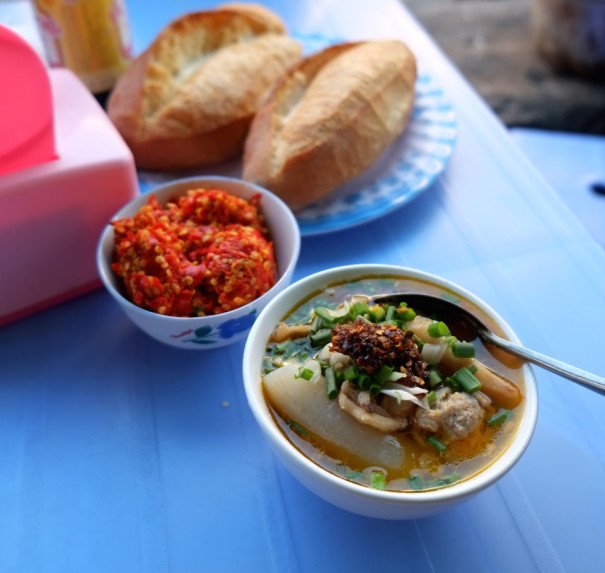
An Alternative History of the Vietnamese Meatball

An Alternative History of the Vietnamese Meatball
Bánh Mì Xíu Mại in Đà Lạt
Every once in a while, I take an overnight bus to Đà lạt for breakfast.
Every morning at dawn beneath the green-trim roof of a colonial-era wooden cottage, a pair of sisters sell bánh mì xíu mại which basically means “shu mai sandwich.” In Saigon, it’s often called bánh mì xíu mại Đà lạt, as though it had somehow been invented or perfected here. The sisters deny that the sandwich may have any relation to China despite the clear presence of “shiu mai” in its name. “It’s Vietnamese mà,” they shout, a bit disgusted by the question. Everyone else in town held the same line.
The Vietnamese don’t cotton much to questions of colonial influence, particularly here. An estimated 30,000 Vietnamese corvée laborers (e.g. slaves) died building Đà lạt so the French could rule their Indochina empire in comfort. The “hill station” was meant to offer a place to plant strawberries, hunt tigers, and escape the degenerative miasmal air killing the colonials in the sultry lowlands.
But by the time Đà lạt really got humming along, the Vietnamese had cranked up their 20th century ass-kicking machine. Ho Chi Minh and friends sent the Japanese (’45), the French (’54), the Americans (’73), the Khmer Rouge (’78) and the Chinese (’79) all home with bloody noses. Đà lạt now offers the defeated a destination to sing karaoke and play golf in the fresh air.
I come for the sandwich.
Imagine dipping bread that’s all crispy crust into a green onion broth full of tender pork pie and meatballs—glorious meatballs! If you get there before eight, order the boiled pig-skin squares, which make bacon seem downright uncivilized.
Calls to a handful of food historians turned up nothing conclusive about when or how meatballs came to Vietnam. The only alternative history I could find was put forward by a Chinese-Khmer woman who (without offering up much evidence) claims the Vietnamese stole the sandwich along with half of Cambodia.
Bánh mì xíu mại, she maintains, is actually called sach chrouk dom cham-hoy.